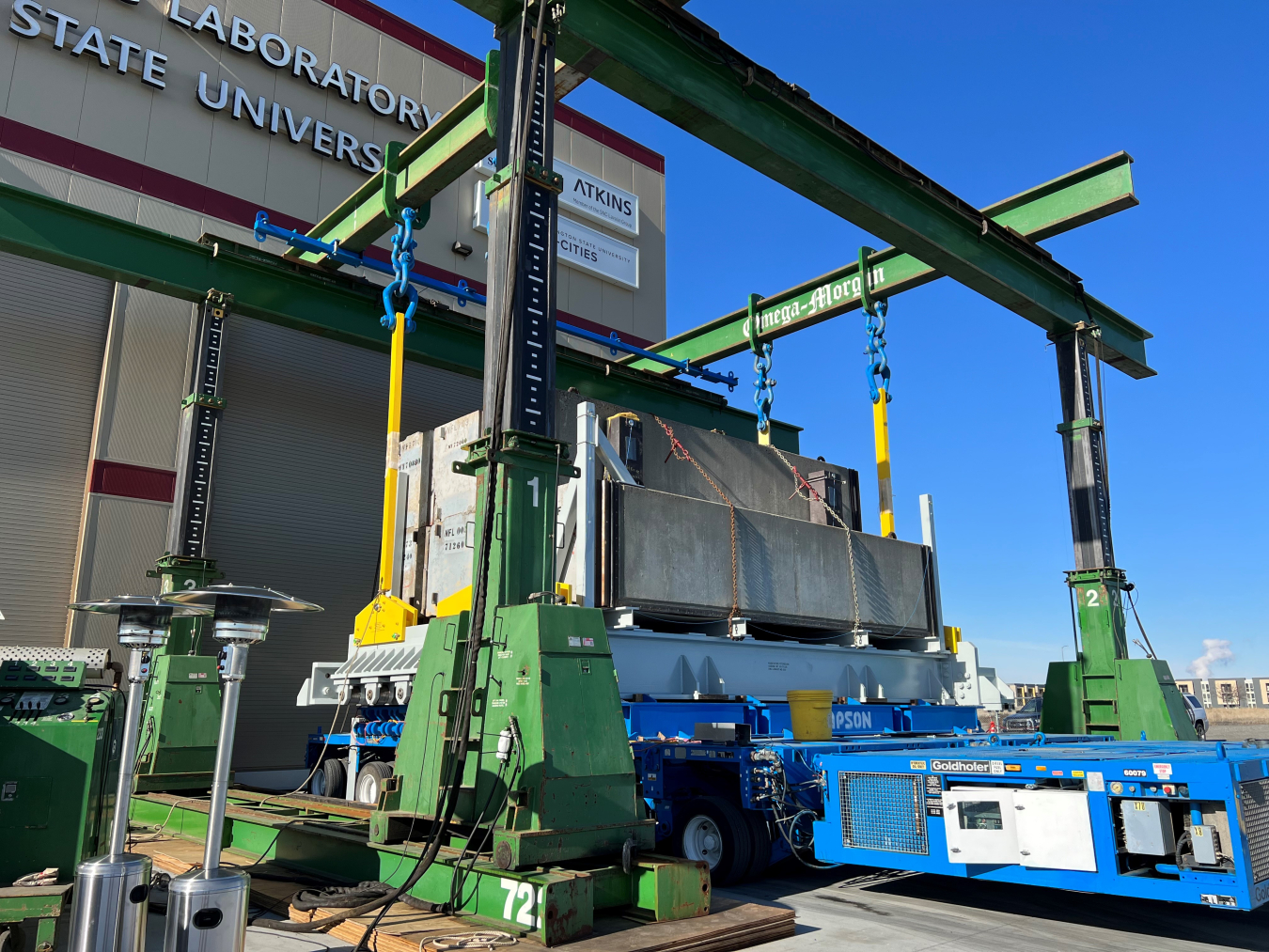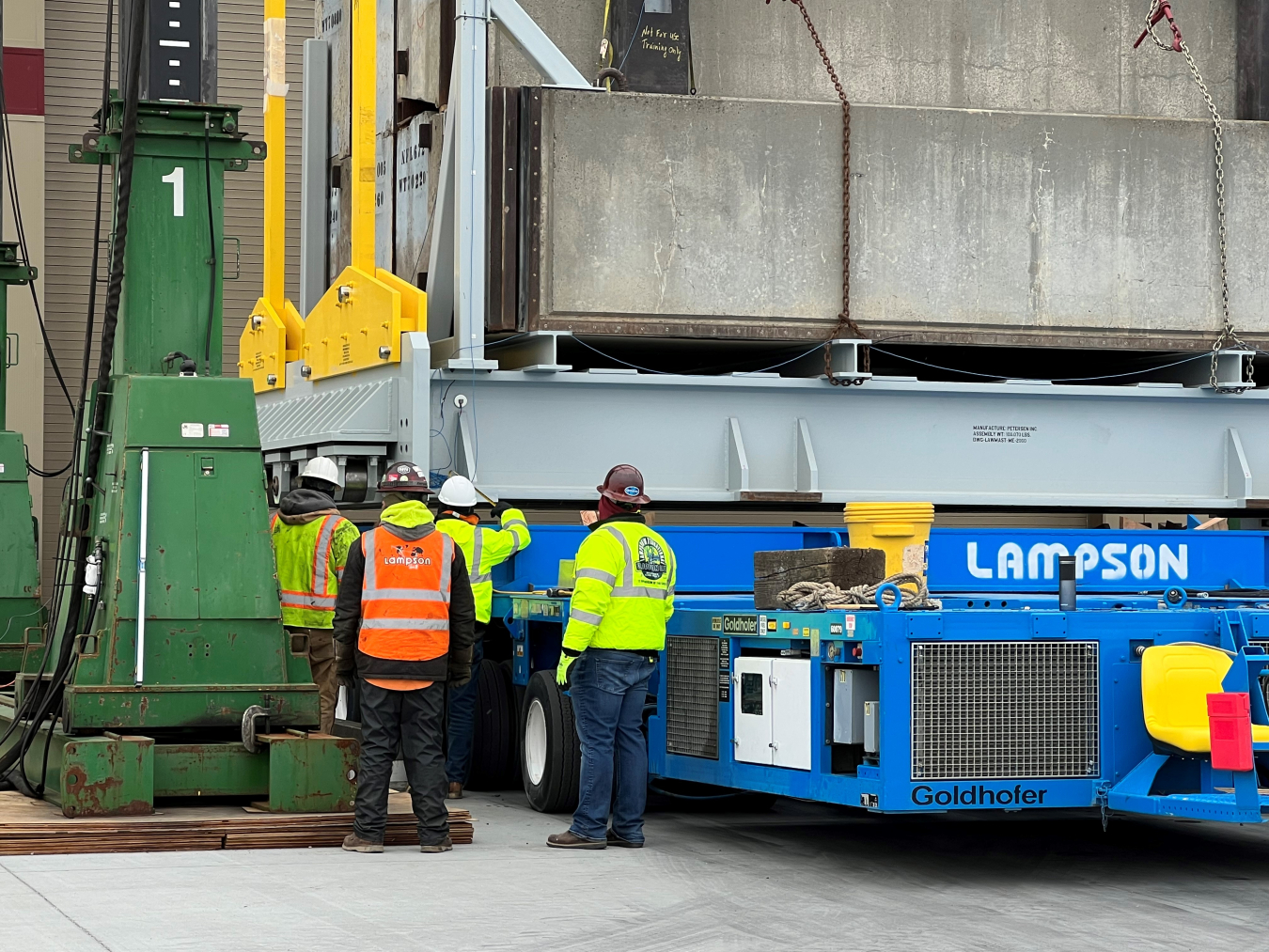Concrete blocks are loaded onto a metal base and transporter during tests on a gantry crane system that will lift replacement melters for the Waste Treatment and Immobilization Plant at the Hanford Site.
Office of Environmental Management
February 21, 2023
RICHLAND, Wash. – EM Office of River Protection tank operations contractor Washington River Protection Solutions (WRPS) and subcontractor Atkins are making progress in their preparations to provide replacement melters for the Direct-Feed Low-Activity Waste (DFLAW) Program to treat tank waste at the Hanford Site.
Earlier this month crews successfully tested a crane capable of lifting the 300-ton melters that will be assembled offsite. The gantry crane is a stationary steel structure with hydraulic “legs” that move the load up and down.
“Crews assembled the first two melters inside the Waste Treatment and Immobilization Plant (WTP), which is where we will vitrify, or immobilize in glass, radiological and chemical tank waste,” said Joe Renevitz, EM waste treatment operations engineer. “The melters are expected to last about five years, so we want to have replacement melters ready to install in order to minimize downtime.”

The gantry crane test started with lifting a mock-up melter base weighted with concrete blocks, simulating the size and weight of a fully assembled melter. The crane lifted the materials a few inches off a trailer, leveled it out and lowered the simulated melter onto rails. Workers repeated the maneuvers several times to ensure a safe and successful transfer. Motion sensors collected data that engineers used to determine what acceleration forces the load had experienced. Acceleration forces are important for making sure the crane movements are slow enough for the heavy load.
“Assembled melters have never been transported and lifted as is planned on the Hanford Site,” said William Young, WRPS engineer. “The weight of the melters when fully assembled is about 80% of the capacity of the gantry crane.”
The sensors will remain in place during practice runs to simulate transporting the melter more than 21 miles to the WTP. Engineers will use the sensor data to ensure that heating components inside the melter won’t shift during transport.
“We’re asking a lot of questions throughout the melter assembly process, to identify potential challenges before encountering them,” said Young. “Testing various scenarios is an important part of making sure the system is ready.”
To receive the latest news and updates about the Office of Environmental Management, submit your e-mail address.

